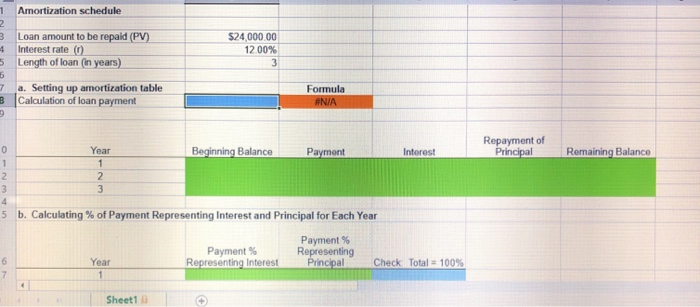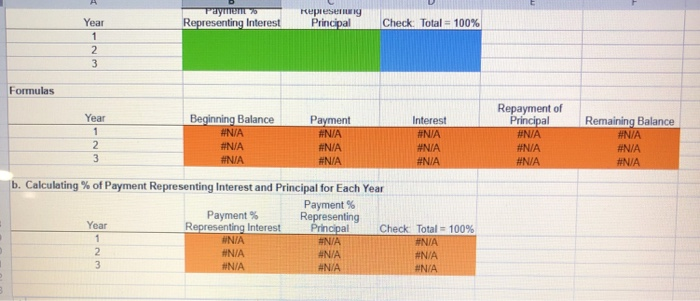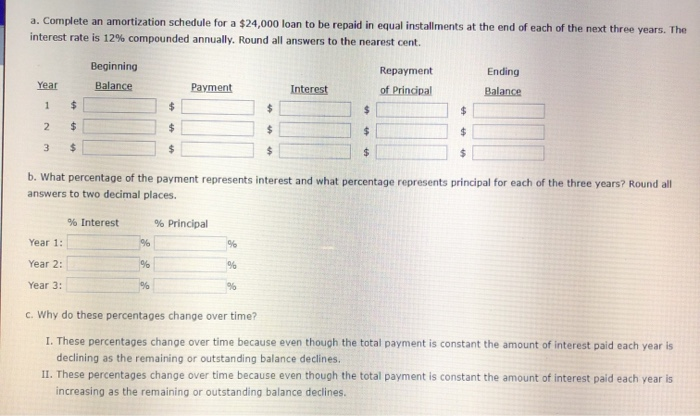Amortization schedule Loan amount to be repaid (PV) Interest rate 0 Length of loan (in years) $24,000.00 1200% 7 Formula B a. Setting up amortization table Calculation of loan payment Year Beginning Balance Repayment of Principal Payment Interest Remaining Balance NO 5 b. Calculating% of Payment Representing Interest and Principal for Each Year Payment % Representing Interest Payment Representing Principal Check Total = 100% Sheet1 Representing Interest sr Principal Year Check Total 100% Formulas Year Beginning Balance #N/A #N/A #N/A Payment #NIA #N/A #N/A Interest #N/A NNIA #N/A Repayment of Principal #N/A #N/A #N/A Remaining Balance #N/A #N/A #N/A b. Calculating % of Payment Representing Interest and Principal for Each Year Payment Payment Representing Year Representing Interest Principal Check Total = 100% WNIA #N/A ENIA ENIA NIA ENIA INA a. Complete an amortization schedule for a $24,000 loan to be repaid in equal installments at the end of each of the next three years. The interest rate is 12% compounded annually. Round all answers to the nearest cent. Ending Beginning Balance Repayment of Principal Payment Interest Balance Year 1 2 $ $ 3 $ b. What percentage of the payment represents interest and what percentage represents principal for each of the three years? Round all answers to two decimal places % Interest % Principal Year 1: Year 2: Year 3: c. Why do these percentages change over time? 1. These percentages change over time because even though the total payment is constant the amount of interest paid each year is declining as the remaining or outstanding balance declines. II. These percentages change over time because even though the total payment is constant the amount of interest paid each year is increasing as the remaining or outstanding balance declines. b. What percentage of the payment represents interest and what percentage represents principal for each of the three years / Hound all answers to two decimal places. % Interest % Principal Year 1: Year 2: Year 3: c. Why do these percentages change over time? 1. These percentages change over time because even though the total payment is constant the amount of interest paid each year is declining as the remaining or outstanding balance declines. II. These percentages change over time because even though the total payment is constant the amount of interest paid each year is increasing as the remaining or outstanding balance declines. III. These percentages change over time because even though the total payment is constant the amount of interest paid each year is dedining as the remaining or outstanding balance increases. IV. These percentages change over time because even though the total payment is constant the amount of interest paid each year is increasing as the remaining or outstanding balance increases. V. These percentages do not change over time; interest and principal are each a constant percentage of the total payment










